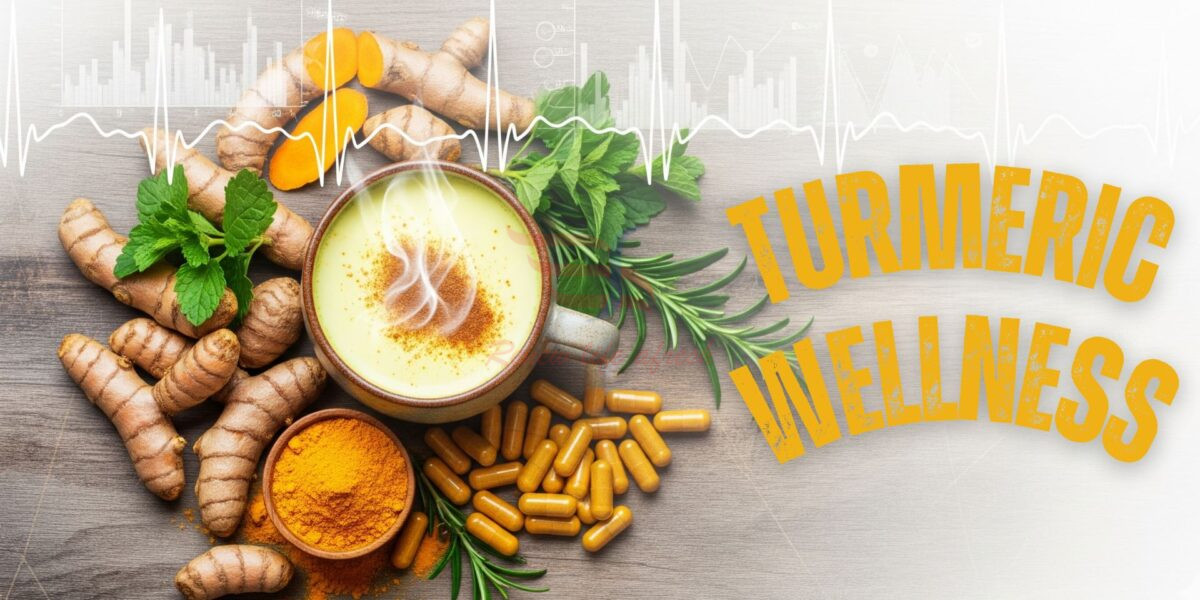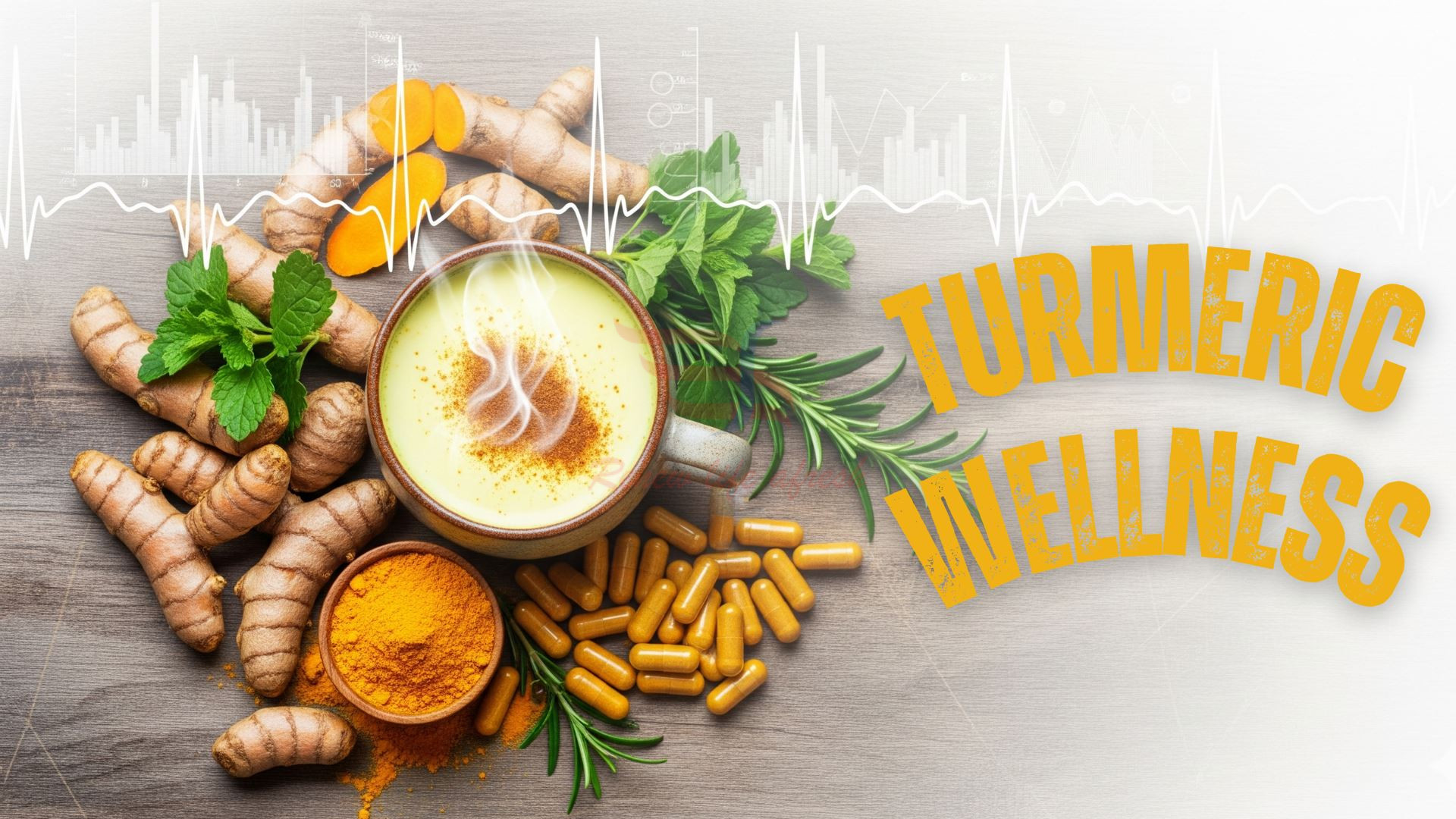Turmeric Benefits: What Science Really Says About This Golden Spice
Turmeric benefits have captivated the wellness world, yet scientific evidence doesn’t always match the golden spice’s glowing reputation. Despite its Instagram-worthy lattes and supplement aisles dedicated to this ancient root, researchers are still uncovering what turmeric actually does in the human body.
While turmeric has been used for thousands of years in Ayurvedic and traditional Chinese medicine, modern science offers a more nuanced view of its potential. The vibrant orange-yellow powder contains compounds called curcuminoids, primarily curcumin, which scientists believe account for most of its biological effects. However, there’s an important distinction between laboratory findings and real-world results that health-conscious consumers should understand.
This article examines what scientific research genuinely tells us about turmeric benefits and its effects. We’ll separate fact from fiction regarding its anti-inflammatory properties, explore how supplements compare to culinary uses, and identify who might benefit most from adding this golden spice to their routine. Additionally, we’ll discuss important safety considerations that often get overlooked in the enthusiasm surrounding this popular ingredient.

What is turmeric and why is it so popular worldwide?
The vibrant golden-orange spice that gives curry its distinctive color has a rich history dating back thousands of years. Raw turmeric comes from the rhizome (underground stem) of the Curcuma longa plant, a flowering perennial in the ginger family native to Southeast Asia and India [1]. Its medicinal history spans an impressive 4,000 years [2], making it one of the world’s oldest natural remedies with documented benefits.
Turmeric vs. curcumin: what’s the difference?
Many people confuse turmeric and curcumin, but they’re not the same thing. Turmeric contains numerous plant compounds, yet curcuminoids—particularly curcumin—are responsible for most of its potential health benefits [3]. Curcumin is the bright yellow chemical that gives turmeric its vibrant color [2].
Fundamentally, curcumin makes up only about 2-8% of most turmeric preparations [4]. This relatively small amount explains why supplements often contain concentrated extracts rather than raw turmeric powder. Curcumin is recognized for its anti-inflammatory, antioxidant, and potential anti-tumor properties [4], which has sparked extensive scientific interest.
One important characteristic of curcumin is its poor absorption in the body. It’s fat-soluble, meaning it dissolves better in fats or oils [3]. For better absorption, it’s often paired with black pepper, which contains piperine—a substance that can increase curcumin’s bioavailability by up to 2,000% [4].
Turmeric vs. curcumin: what’s the difference?
Many people confuse turmeric and curcumin, but they’re not the same thing. Turmeric contains numerous plant compounds, yet curcuminoids—particularly curcumin—are responsible for most of its potential health benefits [3]. Curcumin is the bright yellow chemical that gives turmeric its vibrant color [2].
Fundamentally, curcumin makes up only about 2-8% of most turmeric preparations [4]. This relatively small amount explains why supplements often contain concentrated extracts rather than raw turmeric powder. Curcumin is recognized for its anti-inflammatory, antioxidant, and potential anti-tumor properties [4], which has sparked extensive scientific interest.
One important characteristic of curcumin is its poor absorption in the body. It’s fat-soluble, meaning it dissolves better in fats or oils [3]. For better absorption, it’s often paired with black pepper, which contains piperine—a substance that can increase curcumin’s bioavailability by up to 2,000% [4].
A brief look at turmeric benefits
Throughout history, haldi water benefits has been integrated into various traditional medicine systems. In Ayurveda, practitioners used it for strengthening overall energy, relieving gas, improving digestion, dissolving gallstones, and treating arthritis [3]. Chinese medicine incorporated turmeric during the Tang Dynasty (659 AD), where it was first mentioned in “New Revised of Materia Medica” [2].
Beyond medical applications, turmeric held significant cultural importance. In India, haldi water benefits play a role in religious ceremonies and was applied to brides and grooms during pre-wedding festivities known as the haldi ceremony [3]. Buddhist monks and Hindu priests wore robes dyed with turmeric’s yellow pigment [3], symbolizing its sacred status.
The spice’s culinary uses are equally extensive. From Middle Eastern khoresh recipes to South Asian curries, turmeric has flavored foods across continents for centuries. In Ethiopia and South Africa, it’s traditionally used to give rice its golden color [3].
Why turmeric benefits are still trending in modern wellness?
In recent years, turmeric has experienced a remarkable surge in popularity. According to Google search, raw turmeric benefits or haldi water benefits increased by 75% over a five-year period [3], reflecting growing consumer interest. Haldi or turmeric transformed from an “also-ran to hip ingredient du jour” [3] as wellness influencers and nutritionists promoted its benefits.
Several factors fuel this modern fascination. First, scientific research has begun validating some traditional claims about turmeric’s properties. Studies suggest potential benefits for inflammatory conditions, with particularly promising results for osteoarthritis patients [3]. Furthermore, its relatively low cost compared to other wellness products makes it accessible—most turmeric powder costs under 1000 rupees per jar [3].
The wellness industry has capitalized on turmeric benefit’s appeal by incorporating it into various products beyond traditional uses. Turmeric water benefits (golden milk), supplements enhanced with black pepper for better absorption, and even skincare products have emerged as popular applications [3].
There are lots of benefits of turmeric milk due to anti-inflammatory properties. Though scientific evidence for some claims remains preliminary, turmeric’s rich history and promising research continue to cement its place in both traditional and modern wellness practices.
What are Benefits of Turmeric Powder?
When it comes to turmeric benefits, research has identified curcumin as the primary active compound responsible for turmeric’s therapeutic potential. First and foremost, understanding what science genuinely supports about this golden spice helps separate legitimate health benefits from exaggerated claims.
Anti-inflammatory effects and joint health
Curcumin’s most well-established curcumin benefit lies in its powerful anti-inflammatory properties. The compound works by inhibiting inflammatory signaling pathways, particularly NF-κB, which regulates many genes involved in inflammation [2]. Clinical research shows that curcumin can reduce levels of pro-inflammatory cytokines including IL-1, IL-6, TNF-α, and other inflammatory markers [2].
For joint health specifically, turmeric extracts have proven effective for treating arthritis pain in clinical trials lasting from 4 weeks to 4 months [5]. In one comparative study, curcumin relieved arthritis symptoms in 94% of participants, performing similarly to the prescription anti-inflammatory diclofenac, but with significantly fewer side effects [2]. Notably, none of the curcumin users required treatment for stomach issues, whereas 28% of those taking the conventional medication needed such intervention [2].
Antioxidant properties and cell protection
The phenol rings in curcumin can neutralize harmful free radicals, especially reactive oxygen species (ROS) that damage cells [6]. Moreover, curcumin enhances the body’s natural antioxidant defenses by increasing the activity of protective enzymes like superoxide dismutase [7].
In one clinical study, participants taking turmeric showed a significant increase in urinary antioxidant power (p=0.031) and total polyphenol levels (p=0.022) [6]. This antioxidant capacity explains why turmeric may help protect against oxidative stress-related conditions, including degenerative eye diseases [8].
Potential benefits for heart and brain
Turmeric benefits shows promising cardiovascular effects through multiple mechanisms. Research demonstrates it can lower blood pressure, reduce arterial stiffness, and potentially improve cholesterol levels [6]. In one study, participants who took 4 grams of curcumin daily before and after coronary artery bypass surgery experienced a 65% decreased risk of having a heart attack while hospitalized [9].
For brain health, laboratory evidence suggests curcumin benefits might protect against Alzheimer’s disease by reducing inflammation and preventing the buildup of protein plaques characteristic of the condition [3]. Benefits of turmeric milk Although human trials are still preliminary, curcumin’s ability to cross the blood-brain barrier makes it a compound of interest for neurodegenerative conditions [3].
Turmeric benefits for skin
Turmeric or haldi is populace for its beneficial properties for skin. It is due to its active compound, curcumin. Curcumin benefits potent anti-inflammatory and antioxidant effects can help soothe and heal various skin conditions, including acne, eczema, and psoriasis. Turmeric’s antibacterial properties make it effective against acne-causing bacteria, while its ability to reduce inflammation can minimize redness and swelling. Furthermore, Skin brightening is also a great turmeric benefits. It reduces hyperpigmentation and dark spots. Regular use of turmeric in face masks or skincare products can promote a more radiant, even-toned, and healthy complexion.
How to safely add turmeric to your diet?
Incorporating turmeric into your daily diet offers a practical way to enjoy its potential health advantages without resorting to supplements. Beyond theory, here’s how to make this golden spice work for you safely and effectively.
Cooking with turmeric: best practices
Fresh turmeric root can be stored in the refrigerator for 2-3 weeks when wrapped in a paper towel or frozen for up to six months to maintain freshness [16]. When cooking, start with small amounts—about ½ teaspoon of ground turmeric is generally sufficient for most dishes [9]. There are lots of turmeric tea benefits to mention here. For optimal flavor and health benefits, add turmeric to rice dishes, soups, stews, roasted vegetables, curries, and even scrambled eggs [9][19].
Unlike supplements, culinary turmeric contains only 3-8% curcumin [20]. Yet heating turmeric during cooking for short periods (under 15 minutes) may enhance its bioavailability instead of destroying its beneficial compounds [21].
Turmeric tea and golden milk
Benefits of turmeric milk for skin (haldi doodh) stands out as one of the great turmeric health benefits. To prepare this turmeric tea uses-
• Mix 1 cup of milk (dairy or plant-based)
• Add 1 teaspoon of turmeric powder
• Include ½ teaspoon cinnamon, ¼ teaspoon grated ginger
• Add a pinch of black pepper
• Simmer for approximately 10 minutes [22]
Alternatively, turmeric tea can be made by adding half a teaspoon of turmeric to 2 cups of water along with lemon juice and honey [19].
Conclusion
Turmeric benefits undoubtedly offers several evidence-backed skin benefits, particularly through its active compound curcumin. Nevertheless, the gap between laboratory findings and real-world effectiveness remains significant. While scientific research confirms its anti-inflammatory and antioxidant properties, many other claimed benefits still require additional human studies before drawing definitive conclusions.
The spice’s poor bioavailability presents a fundamental challenge. Therefore, proper consumption methods matter significantly – pairing turmeric with black pepper and healthy fats dramatically increases absorption, whether enjoyed as golden milk, in curries, or sprinkled on vegetables. Although supplements provide concentrated doses that might benefit specific conditions like arthritis, they also carry greater risks than culinary uses.
Most importantly, turmeric isn’t suitable for everyone. People taking blood thinners, certain medications, or those with gallbladder problems should exercise caution. Additionally, pregnant women and individuals scheduled for surgery should avoid medicinal amounts altogether.
For the average person, moderate culinary use of turmeric (½-1 teaspoon daily) represents the safest approach to incorporating this ancient spice. After all, turmeric’s 4,000-year history in traditional medicine systems provides compelling evidence of its value when used appropriately. Though not a miracle cure, this golden spice deserves its place in a balanced approach to wellness – backed by both tradition and emerging scientific understanding.

